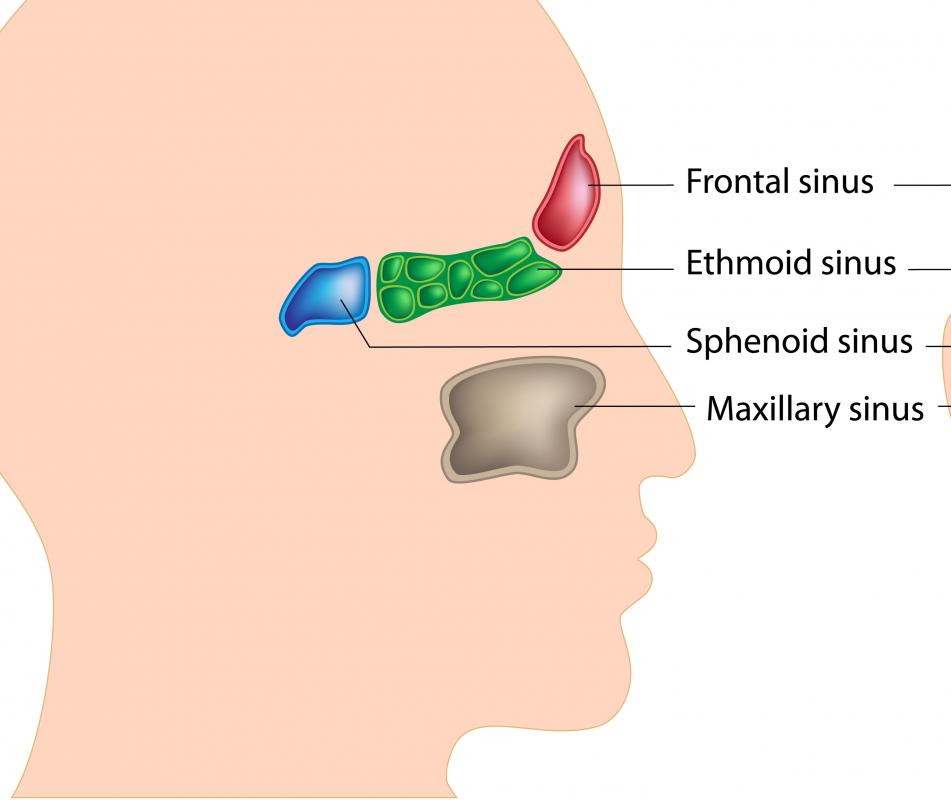At TheHealthBoard, we're committed to delivering accurate, trustworthy information. Our expert-authored content is rigorously fact-checked and sourced from credible authorities. Discover how we uphold the highest standards in providing you with reliable knowledge.
What is Maxillary Sinusitis?
The maxillary sinus is the largest of the paranasal sinuses, a series of cavities in the bones of the skull. The sinuses serve a number of biological functions. Many people are familiar with sinusitis, an inflammation in the sinuses which is common in many regions, especially during the winter. The maxillary sinus is often involved in cases of sinusitis because it can be especially prone to inflammation as a result of the way in which it is structured.
This sinus is located in the maxillary bone, the upper part of the jaw. The maxillary sinus is roughly pyramid-shaped and runs between the base of the eyes and the upper area of the jaw, draining into the nose. One problem with this sinus is that it drains from the top, and consequently does not drain well when people are standing up. People with inflamed maxillary sinuses often note that they feel better when they lie down because this allows the sinus to drain. Maxillary sinusitis can often be identified by the intensification of symptoms experienced by patients while standing.

In cases of acute maxillary sinusitis, inflammation occurs inside the sinus, often as a result of irritation in the nose which leads to a buildup of mucus. It is also possible for the sinus to become infected by bacteria or viruses which manage to enter it. People may experience symptoms like headache, pain in the face, dental pain, dizziness, and runny nose when they have maxillary sinusitis. Acute inflammations resolve within a month.

Chronic maxillary sinusitis is a persistent inflammation which does not resolve. Patients may be required to take several medications to find one which will address the microorganisms in the sinus, and techniques such as nasal irrigation may be recommended to keep the nose and sinuses as clear as possible. In extreme cases, surgery on the sinuses may be required to drain the sinus and irrigate in an attempt to resolve the inflammation. A patient with a history of maxillary sinusitis should make sure that new doctors are made aware.

It is not uncommon for more than one of the paranasal sinuses to become inflamed, especially in cases of chronic sinusitis. In this case, medical imaging studies such as CT scans may be used to visualize these cavities in the skull to determine which sinuses are obstructed; in severe cases, they may be totally blocked. Someone who experiences repeated bouts of sinusitis may be evaluated for signs of an underlying medical issue which might be making the patient more prone to sinus inflammation. Treating the cause might bring the patient some relief from recurring maxillary sinusitis and inflammation of other sinuses.
AS FEATURED ON:
AS FEATURED ON:















Discuss this Article
Post your comments